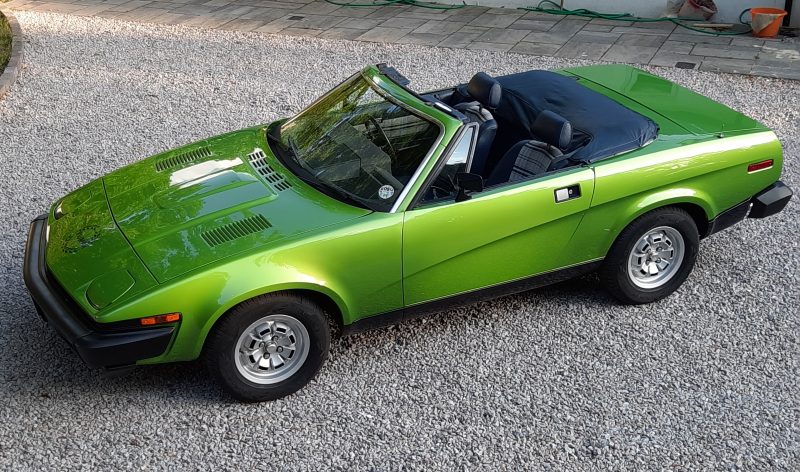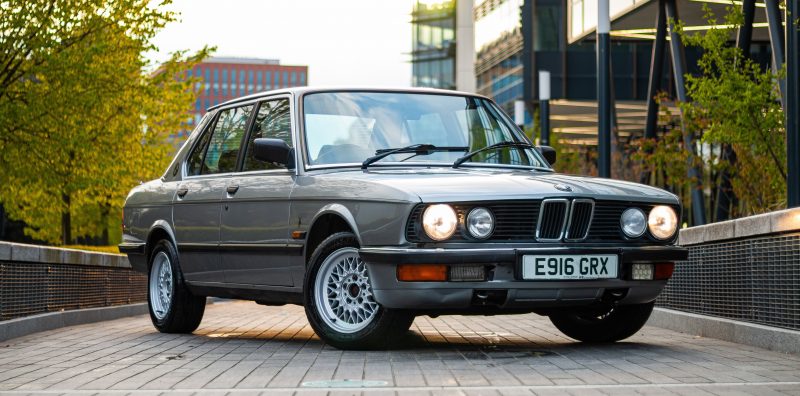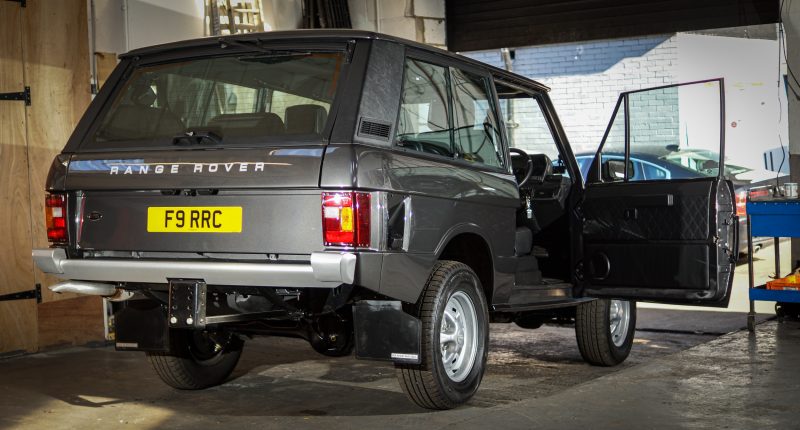Winning Words – Write the Perfect Listing

As Ronan Keating once sang, ‘it’s only words, and words are all I have, to take your heart away’. Bit mushy, but there’s a point, so do stay with us here. Classic cars are an emotive purchase. Nobody needs a classic car. It’s not a decision ruled by the head. It is purely a want. It is a decision led by the heart. This is an important thing to remember when it comes to selling a classic and how you write about it. You want the person reading your advert to fall in love with your car above all others. You need to sell them the dream, as well as the car. This doesn’t mean being sickly and cliché about it. Nor do you need to dust off your best Swiss ‘selling a car is very much like making love to a beautiful woman‘ Tony impression. It does, however, give you the opportunity to be a bit more open and a bit more impassioned than you would be if you were selling a 2006 Ford Focus estate.

And you don’t need to be Wordsworth to pull this off. This is something anyone can do. So, have a read of the five tips below and when the time comes to sell your classic, use them. There are too many adverts out there for incredible cars that read like a product description in the Argos catalogue. Classics are a hobby, they are a passion and they are something we all care about. So put that across in the advert. Sell the car and sell the dream of what it is to own that car.
1) History not Service History
You need to cover the basics, of course. How often the car has been serviced, the mileage, the MOT, all that kind of stuff. But then you need to go into the history of the car as best you know it. What have you done with or to it during your tenure? What restoration works have been done, if any, and by who? What sort of use have you had out of the car? Where did the car come from, who had it before you? A list of dates to say when it was serviced is nice and all, but this isn’t a modern car. It’s had a far longer journey. The where, the who and the why are all far more important than when it last had an oil change. As well you know from owning a classic yourself, people love knowing the history of a vehicle on a human level. If you’re buying a three-year-old Audi, a fully stamped service book matters. For a thirty-year-old Alfa Romeo, however, the history of who owned it, where it’s been and what it’s been used for are all just as important.

2) Be Honest
Classic car buyers are, generally speaking, more informed than people who just need a car. As such, you can be honest in your description. Nobody is expecting your classic to be perfect or to be without the odd issue or sign of age. It’s an old car, after all. So be open and talk about any issues it might have, talk about the bit that might need some attention in the future and talk about the bits and bobs that might not be perfect but that you’ve been able to live with. Hiding these issues, or describing the car as something it’s actually not is only going to annoy interested parties while also wasting your time. If they turn up for a viewing, and there is a list of issues you didn’t mention, they’re going to walk. To use sales lingo, this all part of a qualification. By being open from the start, the people who do contact you will be aware, and willing to still buy. It gives you a far greater chance of selling your classic. Again, nobody is expecting your car to be perfect, and if they are, then more fool them. That’s not how classic cars work.

3) Say Why You Like It
You’re selling a dream here. Remember, a classic car is not a car anyone needs, it’s a car they want. So sell them on the merits. You’ve listed the issues but you can and should also list the things that make your car so wonderful. Tell them about the drive, the power, the wonderful idiosyncrasies that make it so special and fun. Tell them about the reaction it gets, tell them how it makes you feel when you drive it. Talk about the design, the history of that model, the owner’s clubs, the shows, all that good stuff. Make them want it because that’s what it all boils down to. A want, not a need. Your advert needs to be more engaging and more captivating than the rest. You need to be gushing, be open and talk about how special your classic is. Talk about all the work you’ve had done to it, talk about the elements of your car that are better than others. Maybe your engine has been rebuilt, maybe the suspension, it might have rare interior trim. Whatever it is, talk about it, make people reading your advert get excited.

4) Say Why You’re Selling
You’ve sold people on why your car is so special, but now you’re in danger of nullifying that by, you know, selling it. So, get in front of that issue by saying why you’re parting ways. Classic car people, as well you know, are suckers for change. We like to experience different cars, so if that’s why you’re selling, say as much. It might be that the car is just not something you can live with any longer. It might be too low, the steering might be too heavy, it might not be as practical as you need it to be. It’s okay to say all this. It’s honest, and it also feeds into that qualification process. If it’s a bit low and a bit hard on the suspension, then saying so will inform interested parties who might not have considered such things. It means that when the phone does ring or when that email does arrive, it’s from someone informed. Informed parties are the ones that buy.

5) Proof is in the Reading
It sounds trivial, but have someone read your advert for you. Don’t proof it yourself – your brain will fill in the blanks and you’ll miss grammatical errors. As such, it’s always better to have someone else read through it for you. Then, on the emotive front, there is the feedback you stand to gain. Ask whoever reads it for you if it all makes sense. Ask if there is anything missing that they would like to know? Get them to confirm if it flows and reads well. You want this to be a glowing collection of words that tug on the heart and purse strings of potential buyers.

AND FINALLY…
Words are important, but so are the pictures. So don’t forget to have a look at our guide on who to take the best pictures of your car. After all, they say a picture is worth a thousand words, so let them take some of the strain of the selling process.


